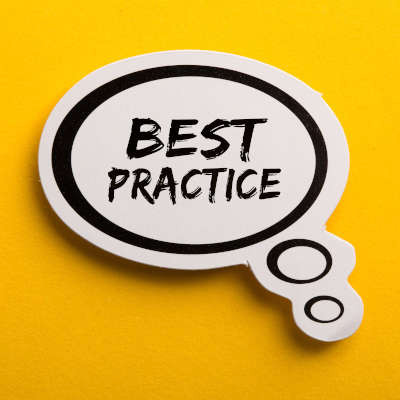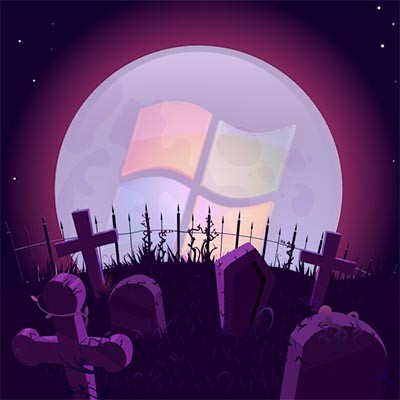Technology drives today’s businesses; if you haven’t embraced modern technology, you’re missing out. So much of what used to make business frustrating can now be done conveniently through technology, including many old analog tasks. Today, we want to highlight some ways you can use technology to seriously upgrade your company’s operations.
Global Tech Solutions Blog
We all have old friends; not the ones that you went to high school with, but oldish technology that we simply can’t bring ourselves to upgrade away from. At some point, however, old technology stops being a trusty sidekick and starts feeling like an anchor. If your devices are making life harder instead of easier, it might be time to say goodbye. Here’s how to know when it's time to let go and upgrade.
Skype is dead; long live Microsoft Teams.
At least, that’s the position that Microsoft has taken. The software company is discontinuing the two-decade-old communication application Skype, shifting focus to the more recent Teams platform, with the app’s last day being scheduled for May 5.
Let’s review what this means and reflect on Skype's impact on modern technology.
The official end-of-support date for Windows 10—October 14, 2025—will be here before you know it. This means you must prepare to transition to Windows 11 as soon as possible, assuming you haven’t already done so.
Here are a few tips and best practices to keep in mind to help make this transition as smooth and painless as possible.
Nobody likes the thought of the device they rely on daily suddenly dying, leaving them without a phone, a laptop, a smartwatch, or whatever the case may be. This is why it is important to stay conscious of when these devices are due to reach their end-of-life date, or EOL, when the manufacturer will no longer support them or provide crucial updates.
Fortunately, there’s a resource that makes this monitoring far easier to manage.
Common knowledge states that the more you put into something, the more you get out of it. Therefore, it stands to reason that you should put as much funding as possible into your most essential resources—such as your IT.
This, however, can be a hard sell to yourself or anyone invested in your company… partners and staff included.
If you are trying to add new tools to your infrastructure, you might quickly find that technology can be a serious challenge for your budget… that is, unless you make some smart investments and decisions about how you implement it. We can help you make the best technology decisions for your business. In fact, here are three strategies you can try to optimize your technology spending.
Technology can get costly, especially if you are looking to integrate new tools into your business’ existing infrastructure. Since this technology is going to play a major role in how your business performs, you need to be vigilant about making the right investments. This week, we thought we’d help by providing three strategies that you should consider when spending on technology.
Has your business implemented the next iteration of the Windows operating system yet, Windows 11? If not, you’re not alone; adoption has been progressing at a snail’s pace, and according to industry professionals, it’s not going to ramp up for quite some time. Still, recent surveys and polls indicate that Windows 11 adoption is far lower than expected, and there is even some discrepancy between reports.
Google search is synonymous with searching the internet, but that hasn’t stopped them from constantly innovating the service. One of the most recent updates is to give users more context for the content that returns on search results. This works to protect users from potentially clicking on websites that could contain threats. Today, we discuss this innovation and how it will look to the end-user.
When a child asks their parents if they can get a dog (or a cat, a hamster, etc.) the typical reply from the parents is usually “you know, owning a pet is a LOT of responsibility…” It might be cliche, but it’s true, and there is a valuable lesson for a kid to learn when adopting a 4-legged friend. Computing technology might not be as cute, but it certainly comes with responsibility and plenty of lessons to learn.
January 14 marks the end of two Microsoft operating systems: Windows 7, and Windows Server 2008 R2. After these titles are retired, using them could quickly result in a major problem for your business’ IT security. If you haven’t made the switch to other solutions by now, you are running out of options. Let’s quickly go over what you can do.
There is no question that today’s business operations require technology, but even that doesn’t tell the whole story. Not only do businesses need technology, they need to maintain this technology as well. Below, we’ll review the three basic steps to technology maintenance… and how we can help simplify these steps for you.
Windows might be the most popular operating system out there, but it’s not perfect. This is why your systems receive patches and security updates as they are released. The problem, however, is that these updates don’t last forever, and one of the most popular Windows systems out there will lose access to support on January 14th, 2020. Are you going to update now, or are you going to risk your systems going without critical updates?
Software solutions don’t last forever. While patches and security updates can stave off the inevitable for quite some time, it’s impossible to maintain a specific solution forever. Support is eventually cut off, and businesses are left exposed if they haven’t taken the time to prepare. In the case of Microsoft SQL Server 2008 and 2008 R2, you are running out of time.





















